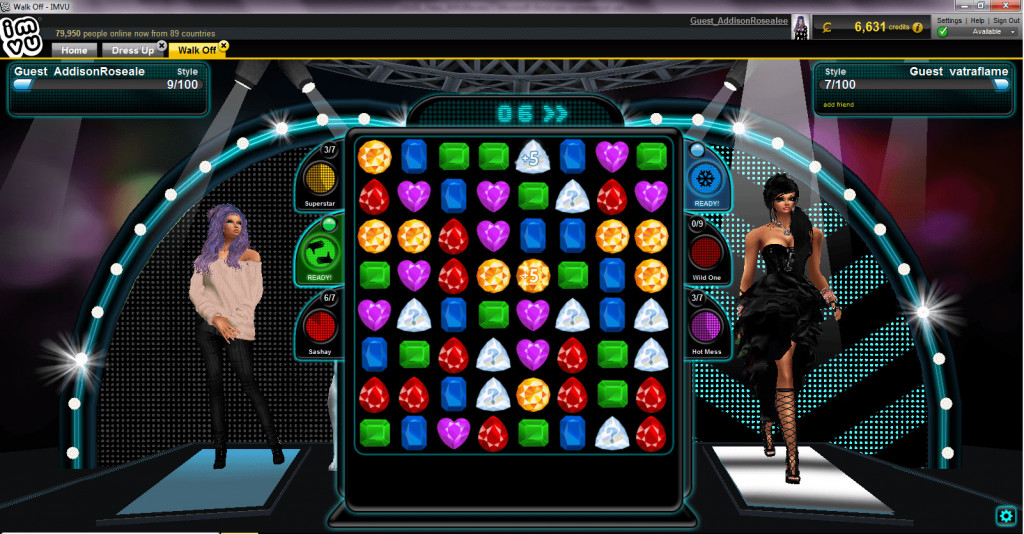
It will be interesting to see how things play out as we make our way through this crazy year. The future is and will continue to be mobile. Unfortunately they haven't (development on all platforms has stalled, but that's a separate conversation).

I pointed that out on a few occasions at RL meetings with you and SineSpace execs, and have been hoping that they would have prioritized mobile platform support. in their pockets (I've been told of much larger user cashout stats, but not sure how reliable the data is ad don't get regular updates). There is also a ridiculous amount being spent on user-created and remixed/derived content (that's when people retexture other ppl's models), though their variable rate fee structure makes it difficult to tell how much of that is going to user-creators vs. Over 80% of casual gaming, and over 80% of social media use (and spending) happens on mobile devices, and has been that way for years. So if you're like I, you may want to keep an eye on IMVU. By contrast, SL creators cash out upwards of $60 million a year. The only category where Second Life is more massive than IMVU is in terms of its effect on the real world economy: While h undreds of IMVU creators earn six figures in US$ every year - fashion and other avatar enhancements being a top seller, while credit "tips" for hosting events like virtual parties, dating shows, and weddings are also a major revenue model - the 50,000+ active creators only cash out $8 million a year. (Unsurprisingly for a virtual world with no mobile client, SL's userbase skews 30s to 50s, perhaps even older.) If IMVU's so huge, why haven't you heard of it? You likely have if you're between 18-25 (the world's demographic sweet spot) - but likely not if you're well over that age. (I suspect she's probably another reason for IMVU's epic expansion, but was too modest to suggest so.) What's more, IMVU recently introduced Live Rooms (see video above), which enables up to 10 users to "broadcast" their room to 1000s of users more.Īll this comes to me via Lindsay Anne Aamodt, IMVU's Director of Marketing, who once handled media relations for TV's Project Runway, among other massive brands. (Especially since Linden Lab refuses to cap excessively heavy avatar enhancements.) "But IMVU is only a chatroom," I can already see some readers protest.īut IMVU has tens of thousands of available chatrooms, and can fit up to 10 users into each 3D space - not that much less than any single Second Life space can handle, before lag chokes out the entire experience.

#Imvu game android#
Launched to iOS and Android in 2014, IMVU's userbase is now 80% mobile, 20% desktop. The secret to IMVU's massive growth is mobile. Only in IMVU's case, that's just a tiny fraction of the total userbase. That's 280,000 IMVU users accessing adult content on IMVU - roughly the same amount of users accessing Adult-rated content in Second Life by my guess.

Only 4% of IMVU's 7 million monthly active users have an Access Pass, allowing them to enter chat rooms restricted to users 18 years and up. Yes, IMVU added Adult-rated content in 2014 - but no, that's not why it's grown so large: It's also massive in terms of a virtual marketplace, with 50 million items in the catalog, made by 50,000 active creators.

It's also massive in terms of company revenue: According to App Annie, it's a top grossing app right behind the white hot video sharing app TikTok (see attached pic below). These numbers, as any regular reader will tell you, far outstrip any peak metric Second Life has ever achieved, in recent times with about 600,000 to 900,000 monthly users ( depending how you define a "user"), and a peak concurrency that's never exceeded the mid-five figures. IMVU has become massive in just about every sense:Īnd a peak daily concurrency of 140,000 users.Īnd peak average daily concurrency of 120,000 users. Let me tell you what's happened with IMVU over the last few years and since you last likely thought about it, if ever at all. In a recent chat with New World Notes readers about the future of Second Life, many wondered whatever became of IMVU, the 3D chat-based world that once was seen by some as rival to SL itself - and by others as a low-end version of the metaverse.


 0 kommentar(er)
0 kommentar(er)
